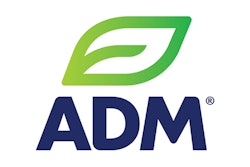
A human food trend that has carried over into pet food—plant-based ingredients—seems to keep growing in both markets, particularly as supply chain issues and growing global populations (both human and pet) place further stress on an already strained supply of animal proteins.
Consider that since the onset of the COVID-19 pandemic, multiple research firms have demonstrated increasing interest in plant-based human food:
- 50% of consumers were consciously eating plant-based proteins, according to ADM;
- 31% of consumers globally reported eating more plant-based proteins over the preceding 12 months, Innova Market Insights found, with the percentages even higher for certain demographics: 35% for respondents aged 18-45 and 37% for both high and mid-high-income earners and those with any higher education degree;
- 40% of consumers were buying plant-based meat alternatives, 2021 Mintel data showed;
- And sales of plant-based human foods increased 27% in 2020, reaching US$7 billion, per SPINS.
Not surprisingly, human food brands have responded to this growing demand. From 2016 to 2020, food and beverage launches with plant-based claims rose at a compound annual growth rate (CAGR) of 47%, according to Innova. Plant protein claims alone grew at more than 30% CAGR.
On the pet food side, a 2021 survey by Beneo showed that 72% of U.S. pet owners were open to having plant-based protein sources in their pets’ diets. Accordingly, plant-based claims on new pet food product launches from 2016-2020 rose at 40% CAGR, according to Innova. And more pet food companies are looking to enter this arena: 62% of more than 300 pet food producers surveyed by CRB, an industry supplier, said they are considering changing protein sources to plants in the next five years.
The ongoing supply chain disruptions that began with the pandemic are likely playing a role. Some industry suppliers, such as Coperion, believed that despite consumer demand, the higher prices for plant-based ingredients had been keeping many of their pet food brand clients from making a significant foray into the category. But as costs continue to rise for traditional animal proteins, that may be changing.
Such cost and availability issues may make plant-based ingredients more attractive to producers. “They might start to reach a market parity,” said Drew Turner, regional sales manager for Coperion, during an Ask the Pet Food Pro chat. “At some point in time, that gap is going to get closed.”

















